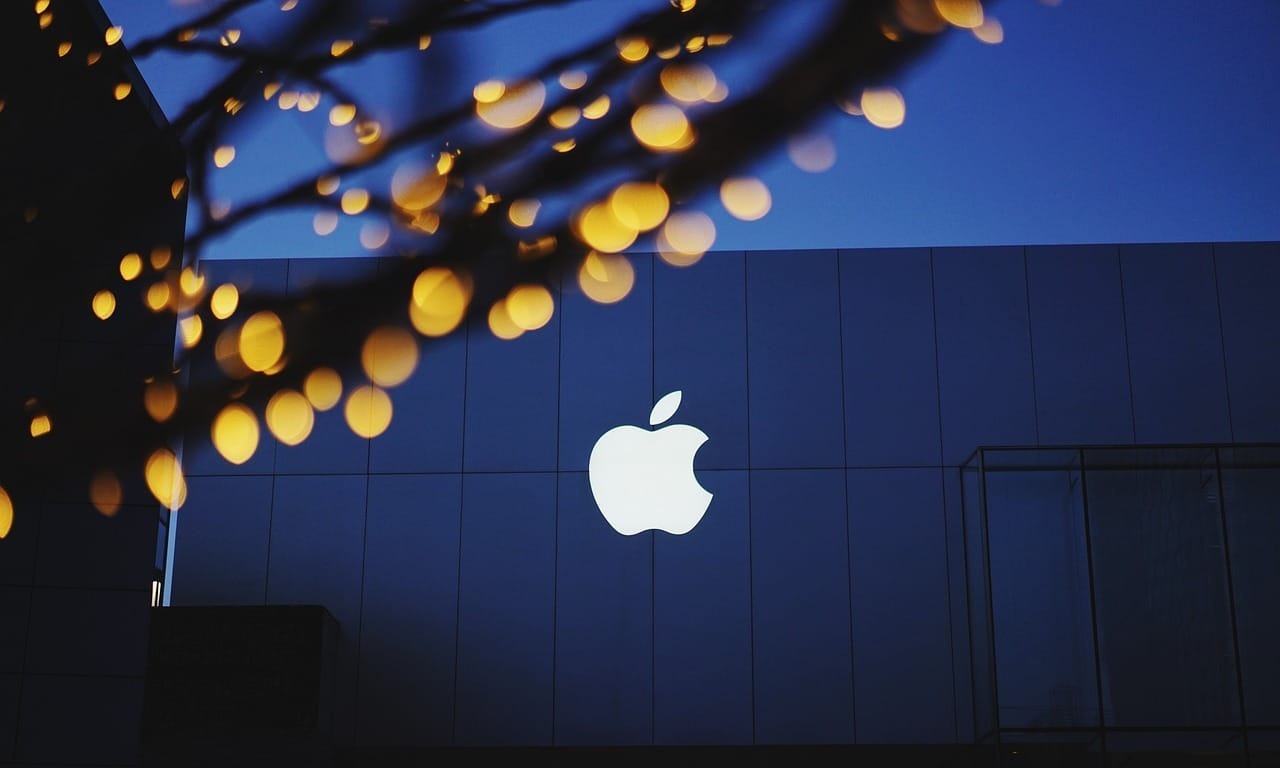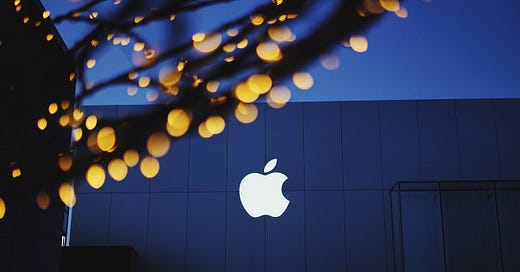Psst, do you know what Apple is up to?
Why businesses leak new product details and how they benefit from these rumours
Good morning! Innovative companies are very good at controlling and safeguarding information. Yet, information about upcoming products often finds its way into the market and media. Such leaks give rivals a heads up but it also helps companies by tipping off potential collaborators as well as letting consumers know that they may benefit from waiting rather than buying a competing product already in the market. That is today’s story. And, of course, we’ve curated your weekly fix of absorbing reads.
The Signal is now on Telegram! We've launched a group — The Signal Forum — where we share what we’re reading and listening through the day. Join us to be a part of the conversation!
If you enjoy reading us, why not give us a follow at @thesignaldotco on Twitter and Instagram.

Apple’s recent unveiling of the Vision Pro, its first augmented reality and virtual reality (VR) headset, came as a surprise to no one who follows Apple news – rumours had been circulating for years.
Apple’s products have a long history of creating waves well ahead of launch due to rumour and speculation. In late 2009, for example, the technology blog MacRumors.com suggested – without fully validated evidence – that Apple was going to call its upcoming tablet computer the “iSlate”. Other rumours about the device – some of which turned out to be correct – discussed possible features and the timing of its forthcoming release. Of course, the “iSlate” was finally launched by Apple in April 2010 as the iPad tablet.
A lack of solid information fuelled ambiguity, in that case, and the same has happened with Apple’s Vision Pro headset. By discussing issues like purpose, price and looks pre-launch, consumers and competitors start to develop ideas about products, and perhaps even what accessories or apps will be needed alongside them. They also start to develop thoughts about how the market – or even consumers’ lives – could change as a result. All with often little to no solid information.
Academic research classifies a rumour as information passed from one person to another with “a lack of secure standards of evidence”. Rumours are forms of information with an uncertain status when it comes to truth – they are sometimes not even true or false yet.
Rumours generally start any time there is ambiguity about future events. So product innovation rumours speculate on forthcoming products or updates. The source could be someone like a contributor to an online technology blog, but it could also come from within a company itself.
It may appear paradoxical for an innovative firm such as Apple to leak new design products – but these rumours can elevate share prices, test industry and consumer reaction, and preempt competitor moves. Other companies – competitors or those developing accompanying products and services – can also use rumours to their advantage. Such information can help them make decisions under time pressure when trying to keep up with fast-paced change in industries such as tech.
In the case of a firm like Apple, product innovation rumours can act as provisional knowledge. As the competition, but also investors, analysts, and the media, all attempt to gather as much information on the direction of forthcoming innovation, rumours are often used to fill any gaps.
Gossip that moves markets
Leaks are often frowned upon by companies because, as is well-documented by research, it can move markets. In the case of Apple’s recent VR headset launch, rumours were among the drivers of its share price rising to an all-time high by the day of its debut on June 5 2023. It soon fell again when Apple announced the headset’s hefty US$3,499 (£2,729) price tag, however.
Rumours can also have a strategic impact on competitors. While pre-launch whispers about Apple’s new VR headset were swirling around the internet, it’s competitor Meta launched a new edition of its VR product at a seventh of the price of Apple’s.
But research into the impact of leaking on company performance creates a mixed picture. For example, one simulation study acknowledges that there are short-term risks of leaking such as competitors getting hold of commercial information, but ultimately found that firms benefit in the long run. For instance, once details of a new project are out there, a firm might be approached about new R&D partnerships with other companies in its ecosystem.
This is why an organisation might engage in “selective leaking” of certain product details, such as code or other intellectual property. This can help generate related contributions from other organisations – app developers in the case of Apple, for example.
And so selective revealing helps inform other interested parties about a possible product direction, especially when such information is hard to come by otherwise. But companies have to constantly negotiate how openness as a strategy can work in tandem with the need to protect intellectual property.
This explains why leaks tend to happen in highly competitive markets where there is a need to draw attention to product plans, to create a buzz around upcoming products, or to discourage consumers from buying competing products. Also, it helps employees and managers in other firms – competitors or producers of accompanying products and services – to react quickly.
Ambiguity fuels rumours
Companies in innovative sectors such as technology can face an ambiguous, nascent market environment that, according to our research, has “unclear customers, undefined product attributes, and no well-established industry value chain”. Under such conditions, rumours can help managers making technical design decisions to tap into discussions and expectations of producers and consumers.
In such market circumstances, rumours can also help out investors and analysts who need reassurance, not only about an organisation’s financial outlook but, by extension, about its strategy.
The role of ambiguity and relative lack of information during the tech product innovation process encourages people to devour rumours to attain new knowledge, however provisional it may be. This is why tech blogs that share rumours have become important information intermediaries that even major investors and company analysts track to glean information on firms’ potential strategic outlooks.
And so, when keeping an ear out for rumours about new tech, remember they are often based on unverified information. While exciting to follow, only time will tell if such leaks are true or false.
Authors:
Basak Yakis-Douglas - Associate professor of Strategy at King's Business School and an Associate Fellow at Saïd Business School, University of Oxford.
Tim Hannigan - Associate professor, University of Alberta
This article is republished from https://theconversation.com under a Creative Commons license. Read the original article at https://theconversation.com/why-businesses-leak-new-product-details-and-how-they-benefit-from-these-rumours-205610
ICYMI

Broadway woos Britney(’s fans): It’s already a winning combination—fairy tale princesses abandon their castles to pursue a feminist liberation set to the iconic hits of pop star Britney Spears. The Broadway show Once Upon a One More Time seems to draw inspiration from Spears’ own battle for liberation against her father. She finally escaped his court-mandated conservatorship in 2021, and her loyal fans made it happen with their #FreeBritney movement. Now, the creators of this show are hoping to win those fans over. Will they succeed? This story in The New York Times explains the unique challenges of wooing a loyal, protective fan base of a troubled star. Spears has officially signed off on the show and will receive a share of profits directly, but her biggest fan accounts are yet to embrace it. People in the show business routinely bend over backwards to please stars, but rarely do they do that for the star’s fans. This is a notable exception. After all, “It’s Britney, bitch!”
Complaining about the Boss: David Zaslav is admired and criticised in equal measure for how he’s shaping Warner Brothers Discovery (WBD) to face a post-merger, streaming-dominated reality. But where there’s a boss in the spotlight, there are scores of employees complaining about him. This story in The Hollywood Reporter is the lowdown on how WBD’s top executives deal with the exacting standards of their boss. What emerges is a picture of a sharp leader and micromanager who will give you a free rein if you can show you’re able to run your own show. It’s also a portrait of an ultra-ambitious man who now wants to feel the full power of the top job he’s worked hard to get. Sometimes, that leads him to make downright foolish choices. Case in point: WBD invested in a ridiculous reality TV show ‘Power Slap League’ on Zaslav’s insistence.
Bummer: Sustainable fashion is a miss. Even as 100 apparel retailers have introduced second-hand fashion platforms, they have few takers. So much so that even brands such as Patagonia and Shein haven't cracked the code as yet. The thing is this shift to thrift hardly makes money. Most fashion brands use resale programmes as an opportunity to get rid of damaged inventory. And so, the revenue share from this inventory is just around 5% of overall earnings. It doesn't help that retailers hand out deep discounts for first-hand goods, making second-hand products unattractive. This story in Bloomberg Businessweek highlights why second-hand fashion has a long way to go before it breaks into the mainstream.
Who runs the world?: The answer isn't bots. If you thought AI runs on prompts, think again. Turns out, AI depends on a pool of humans working behind the scenes training the bot on reality. Data annotation, one of the non-glamorous parts of building AI, is repetitive work where data is sorted and tagged in call centre-like offices in countries all over the world. These data annotators pitch in details about images, fact-check, write code, and listen to Alexa requests, working by the hour. And, of course, there is pay disparity. Workers in Kenya are paid about $1 an hour to label clothes; gig workers in the US are paid $25 an hour to teach these chatbots poetry. Over the past six months, the writer spoke to two dozen Scale AI annotators who put in hard hours to train AI and keep it running. This story in The Verge unravels a vast industry that trains chatbots how to chat.
Guarding the will of the people: It is rare that the three North American heads of state issue a joint statement in support of a Leftist South American leader on winning a hotly contested election. That happened after Luiz Inácio Lula da Silva won the Brazilian presidential polls, narrowly beating the sitting president, Jair Bolsonaro. The outgoing leader turned out to be a sore loser, and his supporters stormed the congress, supreme court, and presidential palace in Brasilia demanding military intervention. That’s when the US and Mexican presidents and the Canadian prime minister issued a trilateral statement backing Lula. Incidentally, Bolsonaro is a friend of former US President Donald Trump who, too, left office kicking and screaming. Financial Times reports the US had an inkling that something like that could happen and had been behind the scenes preparing the ground in Brazil to safeguard the integrity of democratic institutions and elections there. The US administration and security apparatus are said to have used their heft to persuade swing forces to stay on the side of democracy. Some say that Lula does not appreciate it enough.
New economic order, uncertain and unpredictable: This essay in the New York Times ruminates about the currents that are shaping the global economy. From the point in time when the Berlin Wall fell in a final convulsion before the demise of the Soviet Union in 1991, and Francis Fukuyama, then an unknown state department official, declared the “End of History”, until the Russian invasion of Ukraine, the world has swung from unabashed triumphalism of the free market to an era of distrustful nationalism. The global economy is marked by trade affected by ultra-nationalism, private enterprise consumed by greed, and carefully built international systems crumbling under social unrest and climate catastrophe. “While the previous economic orthodoxy has been partly abandoned, it is not clear what will replace it. Improvisation is the order of the day. Perhaps the only assumption that can be confidently relied on now is that the path to prosperity and policy trade-offs will become murkier,” the essay concludes.



